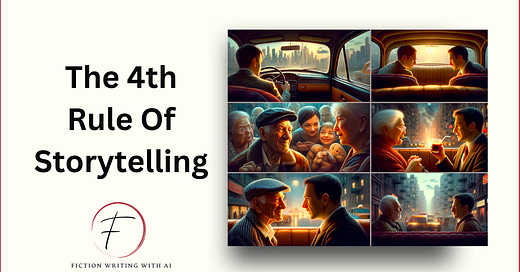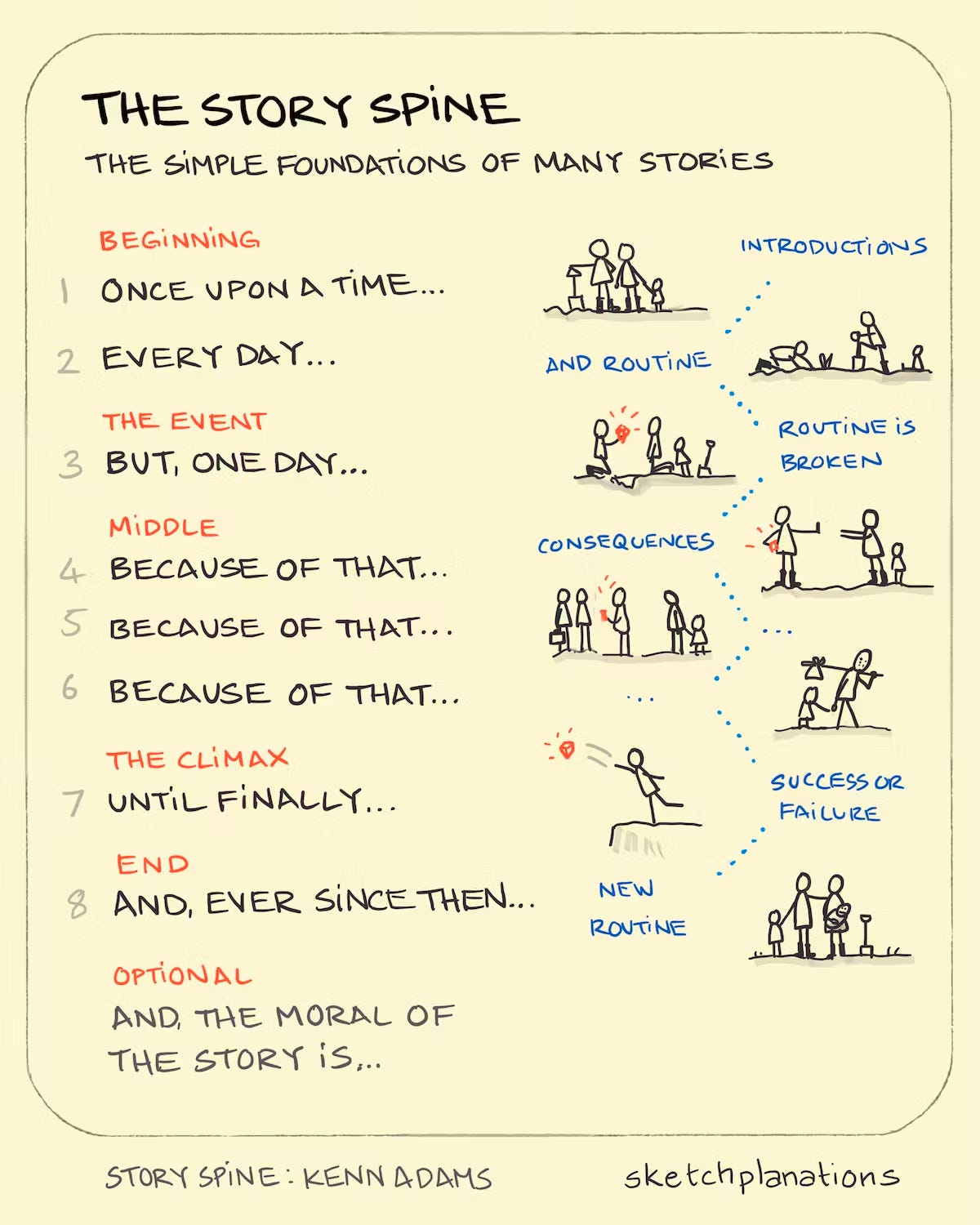The Pixar Storytelling Formula: How To Improvise An 8-Sentence Plot With AI (Tomatometer Approved)
Hey there!
In 2011, storyboard artist Emma Coats tweeted Pixar’s "22 Rules For Storytelling."
The post blew up with thousands of likes, comments, and shares. If you’ve never read the list, it’s worth reading. BUT there’s one rule that’s generated more attention than all the others combined.
And that rule is…
Rule # 4: The Story Spine
Before we get to the formula, you need to know the Story Spine didn’t originate with Pixar.
They just made it famous.
In 1997, a Pixar employee, Rebecca Stockley, walked into an improv class taught by Kenn Adams. Kenn showed his students how to tell a good story during the class. He gave them 8-sentence starters. The students put them to memory and then improvised the rest by filling in the blanks. Without the “Story Spine,” students would get lost, and the story would fall flat, regardless of how good the idea was.
Rebecca loved it.
She brought the technique back to Pixar and taught it to her peers. The company was quick to adopt it. Then, over the next decade, they launched Finding Nemo, Monsters Inc., The Incredibles, and more, all with consistent Tomatometer ratings of over 95% and millions in sales.
The Story Spine structure worked!
And now we want to help you leverage Kenn’s winning formula too! (Except instead of asking YOU to improvise the story, we’ll use the power of AI to fill in the blanks for you.)
Let’s take a look at the formula.
Pixar’s Storytelling Formula
The Story Spine is a series of eight sentences that create a dramatic story.
Like all good stories, the formula first sets up the background and introduces the inciting incident. Then it dives into the consequences before moving to the climax, resolution, and ultimately the long-term implications.
The sentences are:
You can use this structure for any story.
Each step is a sentence starter to help you rough out the plot.
Note: The Story Spine is the spine, NOT the story. It’s the foundational structure for you to build on. And that’s what makes it so powerful. It allows you ensure that all the building blocks are in the right place before you get to far into the writing process.
An Example Story Spine: Breaking Bad
Let's look at the infamous Netflix series “Breaking Bad” as an example.
Once upon a time, there was a high school chemistry teacher named Walter White who lived a modest life with his pregnant wife and son in Albuquerque, New Mexico.
Every day, he struggled with financial instability and the devastating news of his inoperable lung cancer, feeling increasingly desperate about his family's future.
One day, Walter decided to use his chemistry skills for illegal means, partnering with a former student, Jesse Pinkman, to produce and sell methamphetamine.
Because of that, Walter's alter ego, "Heisenberg," emerged, and he found himself entangled in the dangerous world of drug trafficking and violent crime.
Because of that, his relationships with his family and friends began to deteriorate as he sank deeper into lies and moral compromises to protect his drug empire.
Because of that, Walter faced numerous threats from competitors, law enforcement, and even his own brother-in-law, leading to a series of confrontations and escalating violence.
Until finally, Walter's criminal activities culminated in a bloody and dramatic showdown, resulting in his own death but also ensuring his family's financial security through the illicit earnings he left behind.
And ever since then, Walter White's story became a cautionary tale of how desperation and pride can lead a man to sacrifice his morality, family, and ultimately his life, for the illusion of control and legacy.
Easy, right?
Well, we are about to make it even easier.
How To Create A Story Spine With AI
For this prompt all you need is the seed of an idea.
Keep reading with a 7-day free trial
Subscribe to Fiction Writing With AI to keep reading this post and get 7 days of free access to the full post archives.





